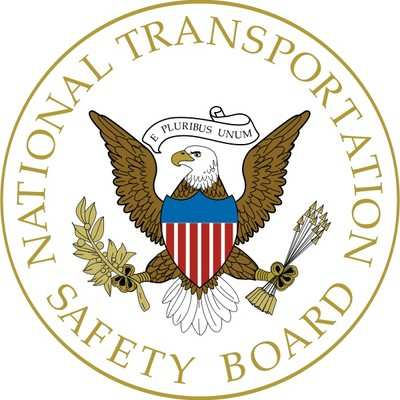Gyroplane Turned And Rolled Right, Through Inverted, Before It Impacted The Runway In A Nose-Low, Upright Position
Location: Foley, AL Accident Number: ERA25FA071
Date & Time: December 9, 2024, 13:32 UTC Registration: N271BP
Aircraft: Magni Builder LLC M-16 Injuries: 1 Fatal
Flight Conducted Under: Part 91: General aviation - Personal

On December 9, 2024, at 1332 central standard time, an experimental amateur-built M-16 gyroplane, N271BP, was destroyed when it was involved in an accident in Foley, Alabama. The pilot was fatally injured. The gyroplane was operated as a Title 14 Code of Federal Regulations Part 91 personal flight.
The operator of the gyroplane and one of his employees, both gyroplane flight instructors, witnessed the accident flight. They each provided statements, and their versions of events were consistent throughout.
The pilot started the gyroplane, taxied, performed an engine run-up, and initiated a takeoff from runway 18 at Foley Municipal Airport (5R4), Foley, Alabama, with no anomalies noted. The engine was at “full power” throughout the accident flight, and the sound of the engine was smooth and continuous until ground contact.
The operator stated that, after rotation and liftoff, the gyroplane “wiggled around a little bit,” which motivated the operator to reach for a handheld radio to offer encouragement and counsel to the pilot, but no radio was available. The pilot “got the shakes out” and the gyroplane stabilized, accelerated, and climbed. The nose of the gyroplane “pitched up too much,” and full left rudder input was applied until the nose of the gyroplane was oriented 90° to the direction of flight.
The operator noted a right cyclic input, which “unloaded” the rotor system and induced a “buntover” event. The gyroplane turned and rolled right, through inverted, before it impacted the runway in a nose-low, upright position. The pilot held a sport pilot certificate and an endorsement for gyroplanes. His certificate was issued on August 08, 2024. A review of his logbook revealed he made only one entry after the date of his practical test. The totals of the entries revealed 47 total hours of flight experience as of September 3, 2024. Interpolating the totals from the logbook and the operator’s records, the operator estimated the pilot had accrued 61 total hours of flight experience, 55 hours of which were in the accident gyroplane.
According to FAA and maintenance records, the gyroplane was manufactured in 2020 and was powered by a Rotax 912 IS, 100-horsepower, fuel-injected engine. The gyroplane’s most recent condition inspection was completed on October 2, 2024, at 350.7 total aircraft hours. The wreckage was examined at the accident site and all major components of the gyroplane were accounted for at the scene. The initial impact point was about halfway down runway 18. The wreckage path was oriented 160° and was about 45 ft long. The fuselage rested on its left side but was deformed by impact and fire. The main rotor hub and blade assembly remained attached and displayed uniform damage and chordwise scratching of each blade. About 50% of each blade from mid-span to the tips were consumed by fire.
The cockpit, instrument panel, seats, flight controls, and the fuselage were all consumed by fire. Flight control continuity was established from the rudder pedal bellcrank to the rudder control horn. Cyclic control continuity was established from the cyclic mixing unit through several breaks to the main rotor fork. The breaks were due to thermal damage to aluminum mount brackets along the cyclic control system.
The engine was damaged by impact and fire. The No. 3 cylinder rocker cover and the exhaust rocker were separated and displaced by impact. The No. 3 cylinder was displaced from the crankcase. The external engine accessories and wire bundles were consumed by fire. Impact damage to the No. 3 cylinder and the propeller driveshaft bearing prevented rotation of the crankshaft. Borescope examination of each cylinder revealed no damage and signatures consistent with normal wear and lubrication.
The 3-blade propeller remained mounted to the hub. The 31-inch blades were uniformly impact-damaged and separated about 11 inches outboard of their respective hubs, with the composite fibers sheared opposite the direction of rotation. Each blade root exhibited fire damage. A portion of one propeller blade was located 86 ft from the initial impact crater, on a 120° bearing behind the gyroplane relative to its direction of travel. The propeller gearbox was removed from the engine which revealed the impact-damaged propeller driveshaft bearing. Once the damaged bearing was removed, the gearbox rotated smoothly, and the internal gears showed neither abnormal wear nor damage.
According to the Federal Aviation Administration’s Rotorcraft Flying Handbook (FAA-H-8083-21): If rotor force is rapidly removed, some gyroplanes have a tendency to pitch forward abruptly. This is often referred to as a forward tumble, buntover, or power pushover. Removing the rotor force is often referred to as unloading the rotor, and can occur if pilot-induced oscillations become excessive, if extremely turbulent conditions are encountered, or the nose of the gyroplane is pushed forward rapidly after a steep climb.
 Aero-News: Quote of the Day (12.09.25)
Aero-News: Quote of the Day (12.09.25) ANN's Daily Aero-Term (12.09.25): High Speed Taxiway
ANN's Daily Aero-Term (12.09.25): High Speed Taxiway ANN's Daily Aero-Linx (12.09.25)
ANN's Daily Aero-Linx (12.09.25) NTSB Final Report: Diamond Aircraft Ind Inc DA20C1 (A1); Robinson Helicopter R44
NTSB Final Report: Diamond Aircraft Ind Inc DA20C1 (A1); Robinson Helicopter R44 ANN FAQ: Q&A 101
ANN FAQ: Q&A 101



